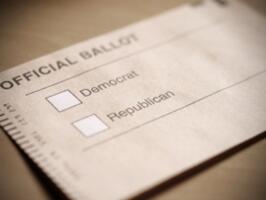What They Told Us: Reviewing Last Week’s Key Polls - Ending Week September 21, 2013
Put your money where your mouth is. That seems to be what many congressional Republicans are counting on in the coming days.
With a September 30 deadline pending, House Republicans on Friday passed a federal budget minus funding for further implementation of President Obama’s national health care law. The Democrat-run Senate is highly unlikely to go along, but the House GOP says it won’t agree to a budget that includes money for Obamacare. A partial government shutdown seems likely unless or until the impasse can be resolved.
Most voters still don't like the health care law, and 54% expect it to increase, not reduce, health care costs. From the beginning of the debate over the law four years ago, voters have consistently said that cost is their number one health care concern.
At the same time, 56% think a government shutdown would be bad for the economy, even though payments for things like Social Security, Medicare and unemployment would continue, but 58% favor a federal budget that cuts spending. This helps explain why 53% would rather have a partial government shutdown until Democrats and Republicans can agree on what spending to cut. Fifty-one percent (51%) favor having a partial government shutdown until Democrats and Republicans agree on what spending for the health care law to cut.
Stay tuned to see which side blinks first.
While some Republicans in Congress hope to stop the health care law by defunding it, voters are evenly divided over which political party they trust more to handle health care.
Forty-one percent (41%) give the president good or excellent marks when it comes to health care issues, while 44% rate his performance in this area as poor. These findings have changed little all year.
The president’s overall job approval ratings have held steady for weeks now at levels seen for much of his first term in office.
Democrats and Republicans are tied at 39% apiece on the latest Generic Congressional Ballot. For much of the summer, neither has hit the 40% mark, suggesting a high level of voter unhappiness with both major political parties.
Washington’s attention to the budget was diverted briefly this week by the mass shooting at the Washington Navy Yard. Americans had strong reactions following the horrific incident on Monday – but not necessarily in the way you might think.
Just 33% of Americans believe it’s at least somewhat likely that stricter gun control laws would have prevented the mass shooting in Washington. Forty-four percent (44%) now believe the United States needs stricter gun control laws, but that’s down eight points from a high of 52% after the Connecticut elementary school shootings in December. Fifty percent (50%) now oppose more gun control.
Only 16% think it is possible to completely prevent mass shootings like the one this past week. By a three-to-one margin (57% to 19%), Americans now see stepped-up action to treat mental health issues as a better way than more gun control to limit incidents of this nature.
Complicating things for gun control advocates is the fact that just 26% of Americans trust the government to fairly enforce gun control laws.
Fifty-four percent (54%) believe the media offer too much coverage of mass shootings like the one in Washington.
Another big decision pending in Washington is choosing a replacement for Federal Reserve Board Chairman Ben Bernanke as his second term nears an end. Voters remain skeptical of the Fed’s independence. Forty-eight percent (48%) think the Fed chairman is influenced by the president in his decision making. Only 28% believe he is truly independent of the administration. Fifty-nine percent (59%) believe big banks and other major financial institutions have too much insider influence over the actions of the Federal Reserve.
Five years after the collapse of Lehman Brothers, half of Americans still lack confidence in the stability of the nation’s banking system.
Confidence in the Fed’s ability to keep inflation under control remains low. Fifty-eight percent (58%) of Americans think interest rates will be higher in a year’s time, the most pessimism expressed since early 2011.
Still, 39% believe now is a good time for someone in their area to sell a house, a finding that has been trending upward this year and is now at the highest level measured since regular tracking began in April 2009.
Thirty-six percent (36%) believe their home will be worth more in a year’s time. Forty-five percent (45%) expect the value of their home to be higher five years from now.
But 14% think they’re likely to miss or be late with a mortgage payment in the next six months, the highest level of worry this year.
At week’s end, 25% of U.S. consumers said their personal finances are getting better these days. Forty-two percent (42%) said their finances are getting worse. Among investors, 33% said their finances are improving, while 35% said they are getting worse.
Mid-term elections are coming next year, with control of the Congress again up for grabs, and you don’t want to miss a single survey. Take advantage of Rasmussen Reports’ special offer: A Rasmussen Reader subscription that lasts through December 31, 2014 is now just $24.95. Sign up today!
In other surveys last week:
-- For the third week in a row, 30% of Likely U.S. Voters say the country is heading in the right direction.
-- It’s New Jersey Governor Chris Christie 39%, Vice President Joe Biden 35% in one possible 2016 presidential matchup. Biden's the winner matched against three other leading Republican contenders. In a face-off with fellow Democrat Hillary Clinton, however, the vice president gets blown away.
-- In a recent New York Times op-ed article, Russian President Vladimir Putin criticized the view of “American exceptionalism” long expressed in this country, based in large part on our democratic and constitutional origins. But 59% believe the United States is more exceptional than other nations.
-- Just 39% are at least somewhat confident that the Medicare system will pay them all promised benefits during their lifetime, including 12% who are Very Confident. As with Social Security, voters under 40 remain noticeably less confident that they’ll see these benefits than their elders are.
-- Just over half of Americans agree that teachers are paid too little, but 74% underestimate what the average teacher salary really is.
-- Fifty-seven percent (57%) of Democrats view teachers unions favorably, while 65% of Republicans and a plurality (47%) of unaffiliated adults regard them unfavorably.
Subscribers to Rasmussen Reports receive more than 20 exclusive stories each week for less than a dollar a week. Please sign up now. Visit the Rasmussen Reports home page for the latest current polling coverage of events in the news. The page is updated several times each day.
Remember, if it's in the news, it's in our polls.
Rasmussen Reports is a media company specializing in the collection, publication and distribution of public opinion information.
We conduct public opinion polls on a variety of topics to inform our audience on events in the news and other topics of interest. To ensure editorial control and independence, we pay for the polls ourselves and generate revenue through the sale of subscriptions, sponsorships, and advertising. Nightly polling on politics, business and lifestyle topics provides the content to update the Rasmussen Reports web site many times each day. If it's in the news, it's in our polls. Additionally, the data drives a daily update newsletter and various media outlets across the country.
Some information, including the Rasmussen Reports daily Presidential Tracking Poll and commentaries are available for free to the general public. Subscriptions are available for $4.95 a month or 34.95 a year that provide subscribers with exclusive access to more than 20 stories per week on upcoming elections, consumer confidence, and issues that affect us all. For those who are really into the numbers, Platinum Members can review demographic crosstabs and a full history of our data.
To learn more about our methodology, click here.



